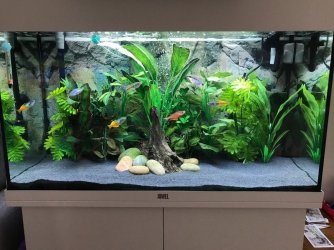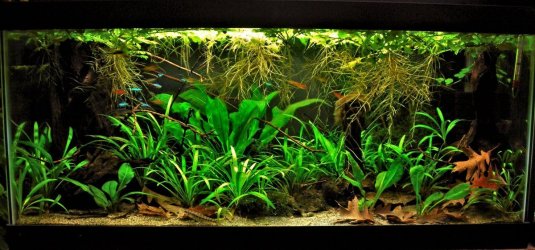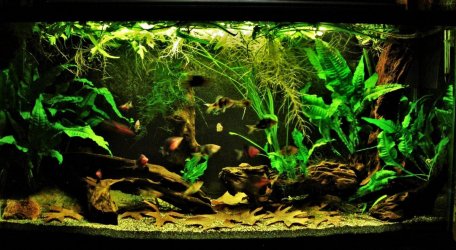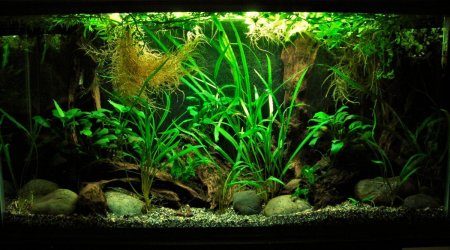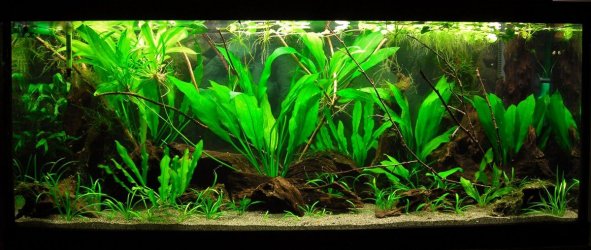TimNorwich
Fish Crazy
- Joined
- Nov 4, 2008
- Messages
- 301
- Reaction score
- 1
Hi guys,
I've currently got a 125L Rainbowfish tank set up. The tank has been running for about a year and a half now. I've currently got a selection of "realistic" looking artificial plants. I know for a fact that 'bows do better in a planted tank so I'd really like to put some real plants in there.
I love the overgrown look of some tanks I've seen, and like the idea of the plants just doing their thing (up to a point of course). The tank has fine black gravel, a Fluval 307 filter, sits at around 25 degrees Celsius, it has the standard LED 1x day bulb and 1x nature bulb that comes with them as standard, I have no interest in upgrading the bulbs. It's probably worth mentioning that the tank is in the middle of my living/dining room so receives a lot of natural light too.
What sort of plants could I grow in here successfully? Ideally I wouldn't have to add co2 as I believe this can get expensive.
Thanks in advance!
Tim
I've currently got a 125L Rainbowfish tank set up. The tank has been running for about a year and a half now. I've currently got a selection of "realistic" looking artificial plants. I know for a fact that 'bows do better in a planted tank so I'd really like to put some real plants in there.
I love the overgrown look of some tanks I've seen, and like the idea of the plants just doing their thing (up to a point of course). The tank has fine black gravel, a Fluval 307 filter, sits at around 25 degrees Celsius, it has the standard LED 1x day bulb and 1x nature bulb that comes with them as standard, I have no interest in upgrading the bulbs. It's probably worth mentioning that the tank is in the middle of my living/dining room so receives a lot of natural light too.
What sort of plants could I grow in here successfully? Ideally I wouldn't have to add co2 as I believe this can get expensive.
Thanks in advance!
Tim


